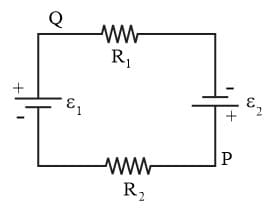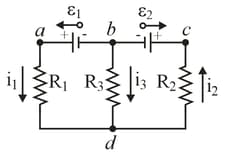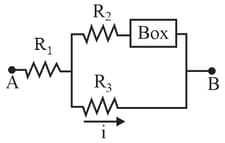Resnick & Halliday Solutions for Chapter: Circuits, Exercise 1: Problems
Resnick & Halliday Physics Solutions for Exercise - Resnick & Halliday Solutions for Chapter: Circuits, Exercise 1: Problems
Attempt the practice questions on Chapter 27: Circuits, Exercise 1: Problems with hints and solutions to strengthen your understanding. Principles Of Physics International Student Version solutions are prepared by Experienced Embibe Experts.
Questions from Resnick & Halliday Solutions for Chapter: Circuits, Exercise 1: Problems with Hints & Solutions
A resistor and a capacitor are connected in series with an ideal battery of emf . At after the connection is made, what is the rate at which
(a) the charge of the capacitor is increasing?
(b) energy is being stored in the capacitor?
(c) thermal energy is appearing in the resistor?
(d) energy is being delivered by the battery?
In an series circuit, emf resistance and capacitance . (a) Calculate the time constant. (b) Find the maximum charge that will appear on the capacitor during charging. (c) How long does it take for the charge to build up to
A copper wire of radius has an aluminum jacket of outer radius There is a current in the composite wire. Calculate the current in (a) the copper and (b) the aluminum. (c) If a potential difference between the ends maintains the current, what is the length of the composite wire?
In the figure, the ideal batteries have EMFs and and the resistances are and If the potential at is what is it at ?

Figure shows the circuit of a flashing lamp, like those attached to barrels at highway construction sites. The fluorescent lamp (of negligible capacitance) is connected in parallel across the capacitor of an circuit. There is a current through the lamp only when the potential difference across it reaches the breakdown voltage . Then the capacitor discharges completely through the lamp and the lamp flashes briefly. For a lamp with breakdown voltage wired to a ideal battery and a capacitor, what resistance is needed for two flashes per second?

Figure shows a section of a circuit. The resistances are and and the indicated current is The electric potential difference between points and that connect the section to the rest of the circuit is (a) Is the device represented by absorbing or providing energy to the circuit, and (b) at what rate?
Six resistors are connected in parallel across a ideal battery. What is the current through the battery?
In the Fig., what is the potential difference between the points and if and and the battery is ideal?


